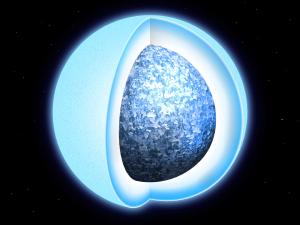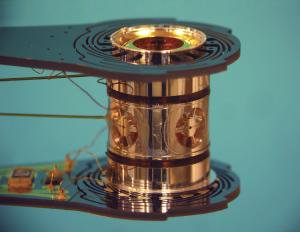Blog
The Star Chamber
23 August 2020
 University of Warwick/Mark Garlick
University of Warwick/Mark GarlickThe density of a white dwarf star defies our imagination. A spoonful of white dwarf matter would weigh as much as a car on Earth. Atoms within the star are squeezed so tightly that they are on the edge of collapse. Squeeze a white dwarf just a bit more, and it will collapse into a neutron star. And now, we can recreate the density of a white dwarf within a lab.1
 Lawrence Livermore National Laboratory
Lawrence Livermore National LaboratoryThe material is created by focusing intense laser light onto a tiny gold chamber known as a hohlraum. The hohlraum contains a 1mm pellet of methylidyne or CH. As a result, the pellet is squeezed to a pressure of 450 million atmospheres, raised to a temperature of 3.5 million degrees, and bathed in x-rays. When the sample pellet is irradiated, the outer layer heats and expands, which creates a shock wave that races toward the center of the pellet at 200 kilometers per second.
The white dwarf matter only exists for short bursts, but it is long enough how the matter behaves. It is known as the equation of state, which describes how a material’s pressure, density, and temperature are related. By nailing down the state equation for white dwarfs, scientists can understand how white dwarfs form and evolve.
The team used a CH sample because they want to understand a type of star known as DQ white dwarfs. These are rare white dwarfs that are extremely hot, and have an atmosphere of carbon gas. Earlier attempts to recreate this type of matter had met with inconsistent results.
While this is the first time white dwarf matter has been created in our solar system, it won’t be the last. In about 5 billion years, our Sun will run out of hydrogen to fuse. After a brief period as a red giant star, the Sun will end its life by collapsing into a white dwarf.
Kritcher, Andrea L., et al. “A measurement of the equation of state of carbon envelopes of white dwarfs.” Nature 584.7819 (2020): 51-54. ↩︎